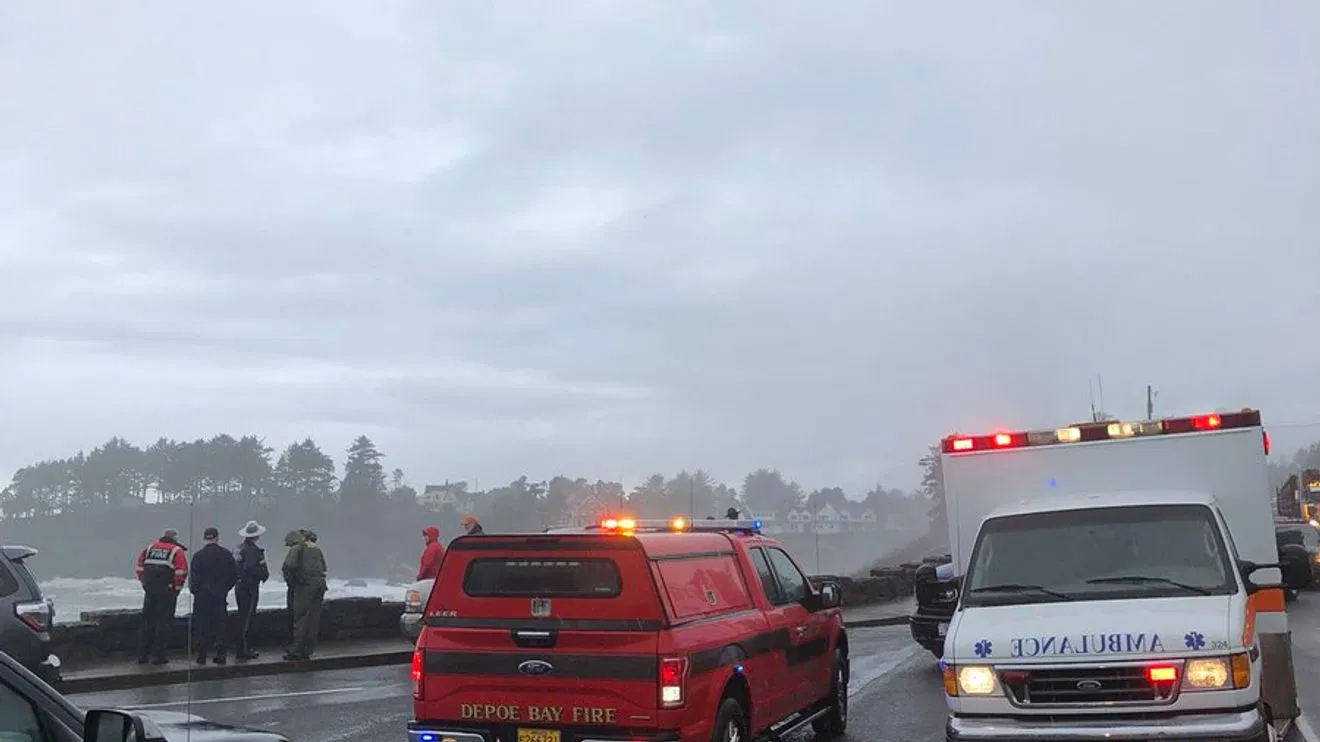 Salmon trucking success could open miles of historical spawning habitat. For the past several years, technicians have been trucking spring Chinook salmon above Foster Dam in Sweet Home to see if they would spawn, and if their offspring could survive the passage over the dam and subsequent ocean migration to eventually return as adults some 3-5 years later.
Salmon trucking success could open miles of historical spawning habitat. For the past several years, technicians have been trucking spring Chinook salmon above Foster Dam in Sweet Home to see if they would spawn, and if their offspring could survive the passage over the dam and subsequent ocean migration to eventually return as adults some 3-5 years later.
A new study examining the genetic origin of adult spring Chinook returning to Foster Dam offers definitive proof that the offspring survived, potentially opening up miles of spawning habitat on the upper South Santiam and other river systems. Results of the study have been published in the Canadian Journal of Fisheries and Aquatic Sciences.
“With a little human assistance, it is now clear that we can restore natural production to areas above some dams and there is prime habitat on some river systems, such as the North Santiam above Detroit Dam,” said Kathleen O’Malley, an Oregon State University geneticist and principal investigator on the project. “This could really contribute to the long-term population viability in some river systems.”
Some past studies have explored whether salmon that spawned above dams could survive as juveniles going back through the dams, but this new study is one of the first to assess whether those fish successfully would return years later as adults.
Beginning in 2007, technicians from Oregon Department of Fish and Wildlife and the U.S. Army Corps of Engineers took genetic samples of adult salmon trucked above the dam. During the first two years, most of those adult salmon were reared in hatcheries and released as juveniles, but in 2009 they began using only wild-born fish, hoping to give a boost to that population. Since then, researchers have taken genetic samples from returning adult salmon to see if their parents were among those released above the dam.
The key is the “cohort replacement rate,” O’Malley said. If you release 100 female salmon above the dam, will you get at least 100 females from that population returning as adults to the dam for a rate of 1.0? The researchers have to sample for several years to determine the success rate of one cohort, since spring Chinook can return as 3-, 4- or 5-year olds. In 2007, ODFW released 385 hatchery-origin adult salmon and 18 wild-born salmon above Foster Dam, and the cohort replacement rate was .96. In 2008, 527 hatchery-origin fish and 163 wild-born fish were released, and the replacement rate was 1.16.
In 2009, the shift was made to all wild-born fish and ODFW released 434 spring Chinook above Foster Dam. When the researchers completed their genetic analysis for that year they found a cohort replacement rate of 1.56. “It could be a one-year anomaly, or it may be an indication that wild-born fish are fitter and better able to survive and reproduce above the dams,” O’Malley said. “It is promising, though.”
Dams can limit downstream damage from potential floods, the researchers say, but there is little protection for spawning salmon above the dams. One flood occurred in 2010, and the researchers are just finishing their analysis of that year. Many of the spawning beds were wiped out, thus the cohort replacement rate likely will be lower. Although re-establishment of spawning activity above the dams has the potential to enhance productivity, those efforts are vulnerable to environmental processes.
“One limiting factor is that we don’t know for sure what an appropriate replacement rate is,” O’Malley pointed out. “We know that 1.0 is the bare minimum – one fish dies and another takes its place. But it won’t be clear what a good number will be to sustain and expand the population until we have several years of research.”
Researchers and fisheries managers note that ocean conditions play an important role in determining the number of adult salmon that survive to return and spawn, and can account for a significant amount of inter-annual variability in salmon abundance. It is important to have a population that is sufficiently productive across years in order to survive poor environmental conditions – in the ocean, or in fresh water – in any single given year.
ODFW also has released fish above dams on the North Santiam River and Fall Creek and OSU researchers are using genetics to monitor some of the first returning adults in these systems. “One reason we think that the South Santiam reintroduction is going so well is that the reservoir is smaller and the dam is lower than in others systems in the Willamette basin,” O’Malley said. “The salmon’s downstream survival rate is likely higher than it may be on other river systems.” The project is funded by the Army Corps of Engineers.
O’Malley is an associate professor in the Department of Fisheries and Wildlife at OSU, who is affiliated with the Coastal Oregon Marine Experiment Station at the university’s Hatfield Marine Science Center in Newport. Other authors on the study include Melissa Evans and Dave Jacobson of Oregon State; Jinliang Wang of the Zoological Society of London; and Michael Hogansen and Marc Johnson of the Oregon Department of Fish and Wildlife. Evans, the lead author, now works for the Fish and Wildlife Department of the Shoshone-Bannock Tribes in Idaho.
Information and photo provided by OSU
